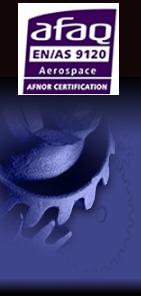(a) Inner ring frequency: (Wi)
The values relate to shaft speed and eccentric running. Increasing amplitudes of this frequency and its harmonics
may indicate increased out of balance loading.
Wi = n / 60 (Hz)
where n = shaft speed (rev/min)
(b) Cage frequency with reference to the outer ring: (Wco)
The values relate to cage balance and rolling element size grading tolerances. Increasing amplitude of this
frequency and its harmonics may indicate cage wear or a rolling element failure.
Wco = ( Wi / 2 ) * (1 - d/D.cos(θ)) (Hz)
where D = the pitch diameter of the rolling elements (mm)
d = the rolling element diameter (mm)
θ = the contact angle (degrees) is zero for radial contact ball and roller bearings
(c) Cage frequency with reference to the inner ring: (Wci)
The values result from the interaction of inner ring shape, rolling element size grading tolerances and cage imbalance.
Increasing amplitude of this frequency and its harmonics may indicate cage or rolling element failure.
Wci = wi - Wco (Hz)
(d) Outer ring pass frequency (Wo)
This is the number of times that a rolling element passes a fixed point on the bearing outer ring. Increasing
amplitude of this frequency and its harmonics may indicate outer ring raceway failure.
Wo = Wco . Z (Hz)
Where Z = the number of rolling elements in the bearing
(e) Inner ring pass frequency (Wd)
This is the number of times that the rolling elements pass a fixed point on the bearing inner ring. Increasing
amplitude of this frequency and its harmonics may indicate inner ring raceway failure.
Wd = (Wi - Wco) . Z (Hz)
(f) Rolling element rotational frequency (Wr)
This relates to rolling element shape tolerances and increasing amplitudes of this frequency and its harmonics
may indicate rolling element damage or failure.
Wr = (Wi . D)/2.d * [1- (d.cos(θ)/D)2] (Hz)
The harmonics of the basic frequencies are usually the most critical and particular harmonics will indicate changes
in amplitude more readily than others. Other frequencies that relate to the raceway and rolling element surface
conditions and seating accuracy effects will also be present. Random and unpredictable signals may arise due to
contamination, low lubricant viscosity, grease churning/slumping, light load, cage vibration or the incorrect
attachment of the measuring transducer.
The above information is the sole property of the NSK Corporation. AHR International accepts no liability for its
accuracy or interpritation.








